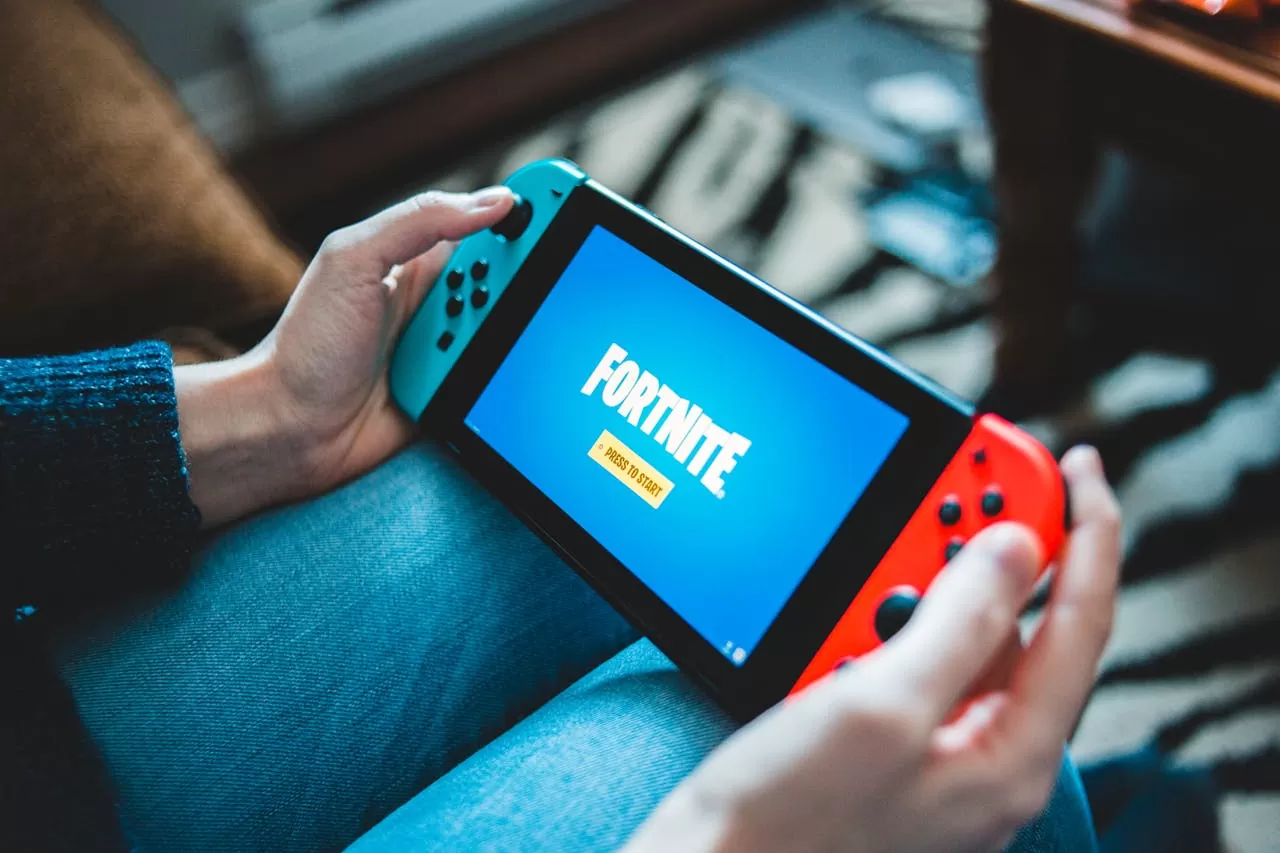Fortnite. A name that has become part of our everyday vocabulary, whether you’re a concerned parent, an enthusiastic teenager, or simply an observer of the video game phenomenon. Launched in 2017 by Epic Games, what started as a simple survival game has transformed into a global cultural phenomenon generating billions in revenue. But how did an officially “free” game become one of the greatest commercial successes in entertainment history? The answer lies in a formidable economic model: microtransactions.
Today, with Fortnite counting over 400 million registered players worldwide, we’ll decode how this title succeeded in normalizing in-app purchases for an entire generation and examine the consequences of this revolution on the video game industry, consumer behavior, and even the global digital economy. Between sophisticated marketing strategies, psychological mechanics, and commercial innovations, let’s discover together the underpinnings of a phenomenon that has redefined our relationship with digital consumption.
The Perfected Free-to-Play Model: Epic Games’ Winning Strategy
Revolutionary Economic Foundations
Fortnite is based on a business model that seems paradoxical: offering a high-quality game for free and then generating revenue through optional purchases. This “free-to-play” approach existed before, but Epic Games has perfected it to an unprecedented level. In 2020, the game generated $5.1 billion, primarily through V-Bucks, its virtual currency.
Fortnite’s strength lies in its fundamental proposition: all elements affecting gameplay are accessible for free. Purchases exclusively concern cosmetic elements (skins, dances, accessories) that offer no competitive advantage. This clear distinction between paid and free elements has avoided the “pay-to-win” label that typically repels many players.
The Battle Pass System: The Disguised Subscription
Fortnite’s major innovation was the introduction and popularization of the “Battle Pass” concept. For about $10 per season (which typically lasts 10 weeks), players progressively unlock rewards by playing and completing challenges. This brilliant system combines three powerful psychological elements:
- Long-term engagement: players are incentivized to return daily to progress
- Visible progression: each session offers a tangible reward
- High perceived value: the Battle Pass theoretically offers items worth much more than its purchase price
According to a SuperData Research study, up to 70% of active Fortnite players have purchased at least one Battle Pass, transforming what was a one-time purchase into a form of disguised seasonal subscription.
Item Shop Rotation: Creating Artificial Scarcity
Epic Games has also excelled in creating artificial scarcity with its item shop that changes daily. Items are only available for 24 hours before disappearing for an undetermined period, thus creating a powerful “Fear Of Missing Out” (FOMO).
This mechanism exploits well-known cognitive biases in behavioral economics: the increased valuation of a scarce good and the urgency to purchase when faced with limited availability. Internal data leaked in 2021 revealed that on days when popular skins return to the shop, revenue can be multiplied by seven compared to an average day.
Psychological Impact: Why Young Players Are Particularly Vulnerable
Early Formation of Purchasing Habits
Neuroscience has demonstrated that the adolescent brain is particularly sensitive to rewards and less able to evaluate long-term consequences. Fortnite primarily targets an audience between 8 and 24 years old, whose financial decision-making system is still developing.
A study published in the Journal of Behavioral Addictions revealed that 45% of players aged 10 to 18 reported not thinking before making purchases in Fortnite, and 27% regularly regretted their purchases afterward. These alarming statistics highlight how young players can develop impulsive buying habits that risk persisting into adulthood.
Intermittent Reward Mechanics
Fortnite’s reward system brilliantly uses the principle of “intermittent reinforcement,” a technique identified by psychologist B.F. Skinner as particularly addictive. Unlike constant reinforcement, where each action produces a predictable reward, intermittent reinforcement (random or unpredictable rewards) creates stronger anticipation and more lasting engagement.
Loot Llamas (in Save the World mode) and random chests in the game exploit this psychological mechanism. The feeling of euphoria associated with obtaining a rare item creates a dopamine loop that encourages repeated purchases in the hope of recapturing that feeling.
Digital Identity and Social Pressure
For Generation Z, the online avatar has become an extension of personal identity. In Fortnite, skins are not just costumes but social status markers within the game’s ecosystem.
Surveys of young players have revealed that 64% of them have felt pressure to buy skins in order to “stay on trend” or avoid being perceived as “defaults” (a pejorative term for players using the free default appearance). This peer pressure, amplified by social media and influential streamers, constitutes a powerful purchasing driver.
The Fortnite Ecosystem: Much More Than a Simple Video Game
Media Convergence and Pop Culture
Fortnite has transcended its status as a video game to become a cultural platform where music, cinema, sports, and fashion converge. Collaborations with Marvel, Star Wars, the NFL, Travis Scott, or Ariana Grande have transformed the game’s internal economy.
These strategic partnerships create limited events generating enormous revenue spikes. Travis Scott’s virtual concert in 2020 attracted 12.3 million simultaneous viewers and coincided with a 26% increase in item shop spending during the week of the event.
Network Effect and Programmed Virality
Epic Games has masterfully exploited virality mechanisms by integrating shareable features (recognizable dances, spectacular moments, etc.) that naturally propagate on YouTube, TikTok, and Twitch.
This organic virality functions as a powerful free and self-sustaining marketing campaign. Statistics show that 35% of new players join Fortnite after viewing content on social media, demonstrating formidably efficient customer acquisition.
The Parallel Economic Ecosystem
Around Fortnite, a complete economic ecosystem has developed including:
- The content creator market (YouTubers, streamers)
- E-sports competitions with massive prizes
- Physical merchandising
- Prepaid V-Bucks cards available in traditional retail
This parallel economy reinforces the legitimacy of in-game spending by creating a continuum between virtual and real economies.
Epic Games’ Innovative Business Strategies
Multi-Layer Monetization
Epic Games has implemented a sophisticated monetization system operating at several levels:
- Base layer: Battle Pass and direct purchases in the shop
- Intermediate layer: Starter packs and thematic bundles at reduced prices
- Premium layer: Limited editions and exclusive collectibles at high prices
This stratification allows monetization of different player segments according to their propensity to spend, from casual players to “whales” (a term designating big spenders in free-to-play games).
| Spender Type | Purchasing Behavior | Targeted Products | % of Revenue Generated |
|---|---|---|---|
| Non-spenders | Play for free | None | 0% |
| Occasional | 1-3 purchases per year | Battle Pass only | 15% |
| Regular | Monthly purchases | Battle Pass + occasional skins | 35% |
| Enthusiasts | Weekly purchases | Complete thematic collections | 30% |
| “Whales” | Multiple purchases per week | All available content + rare variants | 20% |
Creating a Closed Economy via V-Bucks
The use of an intermediate virtual currency (V-Bucks) rather than direct payment in real currency is a deliberate strategy. This psychological dissociation between real and virtual money diminishes the “pain of payment” and encourages spending.
Additionally, V-Bucks are sold in predefined packages that never exactly match the price of items, always leaving a residual balance that incentivizes buying more V-Bucks to avoid “wasting” this unused balance.
The Attention Economy and Daily Engagement
Epic Games has built a system where player attention is continuously solicited and rewarded:
- Renewed daily quests
- Weekly challenges with progressive rewards
- Limited-time seasonal events
- Daily shop rotations
This constant engagement mechanism creates deeply anchored habits, as shown by the impressive average of 6-8 hours of weekly gameplay per active user in 2022.
How to Protect Young Players from Microtransaction Excesses
Parental Controls: Necessary but Insufficient
Epic Games offers parental control tools to limit gameplay time and spending. However, a Consumer Federation of America survey revealed that only 29% of parents actually use these restrictions, often due to lack of awareness or perceived complexity.
Steps to Configure Parental Controls on Fortnite:
- Create an Epic Games account for the parent
- Link this account to the child’s account
- Access parental control settings
- Define time and spending restrictions
- Activate purchase notifications
Financial Education Adapted to the Digital Era
Faced with increasingly sophisticated monetization mechanisms, traditional financial education proves insufficient. Organizations like Internet Matters recommend integrating specific discussions about digital spending into young people’s financial education.
Some schools in the United States have begun incorporating modules on video game economics into their civic and financial education programs, recognizing the importance of preparing young people to navigate this new economic reality.
Emerging Regulatory Initiatives
Faced with growing concerns, several countries have begun to legislate:
- Belgium and the Netherlands have classified certain loot box mechanics as gambling
- South Korea requires disclosure of probabilities in random reward systems
- The United Kingdom is considering regulating in-app purchases targeting minors
In the United States, bills like the proposed “Protecting Children from Abusive Games Act” specifically address transparency in microtransactions and practices targeting minors, though comprehensive federal legislation remains pending.
Impact on the Industry: When the Exception Becomes the Norm
Transformation of the Video Game Economic Landscape
Fortnite’s phenomenal success has caused a tsunami in the industry. Franchises historically sold at full price like Call of Duty have adopted hybrid models with Warzone, their free battle royale financed by microtransactions.
The figures are telling: in 2022, global revenue from microtransactions in games ($120 billion) surpassed traditional game sales ($80 billion) for the first time, marking a historic turning point in the video game economy.
The Emergence of the “Metaverse” as a Logical Extension
The concept of the metaverse, these persistent virtual worlds where socialization and consumption mix, represents the natural evolution of the Fortnite model. Epic Games, with a $1 billion investment in its “metaverse vision,” positions Fortnite as much more than a game: an economic and social platform.
This evolution raises important questions about digital ownership, the value of virtual goods, and the boundaries between real and virtual economies that legislators still struggle to fully understand.
The Ethical Challenge for Developers
Fortnite’s financial success places developers in an ethical dilemma: balancing economic viability with responsibility toward vulnerable audiences. Some independent studios like Innersloth (Among Us) or Concerned Ape (Stardew Valley) are exploring alternative models minimizing potentially addictive mechanics.
The International Game Developers Association recently published guidelines on “ethical monetization practices,” encouraging transparency and moderation in the implementation of microtransactions.
Common Mistakes to Avoid for Parents and Players
For Parents
- The saved credit card error: Leaving payment information stored on the child’s account facilitates impulsive purchases.
- Ignoring game mechanics: Not understanding how the purchase system works makes constructive discussion with the child difficult.
- Counterproductive total prohibition: Completely banning Fortnite can socially isolate the child without teaching moderation.
- Lack of clear framework: Not establishing precise rules regarding spending and gameplay time creates confusion and conflicts.
For Players
- Impulsive buying under social pressure: Giving in to the desire to buy a skin solely because it’s “rare” or popular.
- Confusion between temporary desire and long-term value: Not evaluating whether the purchase will provide lasting satisfaction.
- Overlooking the cumulative effect: Not taking into account the cumulative total of repeated small purchases.
- Unawareness of manipulation techniques: Not recognizing the psychological mechanics exploited by the game.
The Betwiseup Editorial Team’s Opinion: Between Economic Revolution and Collective Responsibility
Fortnite undeniably represents a revolution in the digital entertainment economy. Its business model has transformed our relationship with content consumption and redefined what it means to “play for free.” Fortnite’s most enduring legacy may not be its gameplay or universe, but rather the entire generation it has accustomed to a new paradigm of digital consumption.
This transformation raises fundamental questions that go beyond the simple framework of video games. How do we balance commercial innovation and protection of vulnerable audiences? What value do we place on purely cosmetic digital goods? How do we prepare young people to navigate an economy where the boundaries between real and virtual are blurring?
The answer probably lies in a multi-level approach: better digital and financial education, adapted regulatory frameworks, and increased industry responsibility. In the meantime, stay vigilant and informed to make enlightened choices in this new economic landscape shaped by Fortnite and its successors.
Want to delve deeper into this topic? Download our free guide “Understanding and Managing Video Game Spending” and receive our alerts on the evolution of commercial practices in the video game industry.
FAQ: Understanding Everything About Fortnite and Microtransactions
What are V-Bucks and how do they work?
V-Bucks are Fortnite’s virtual currency. They are purchased with real money and allow you to acquire cosmetic items in the game. 1000 V-Bucks cost approximately $8, but the conversion rate varies depending on the packs purchased.
Is Fortnite really free?
Yes, Fortnite Battle Royale is entirely playable for free. All elements affecting gameplay are accessible without spending money. Only cosmetic elements are paid.
At what age is Fortnite recommended?
Fortnite is officially rated T (Teen) by the ESRB in the United States, which means it is recommended for players 13 years and older, primarily due to the stylized violence it contains.
How can I limit my child’s spending in Fortnite?
Epic Games offers parental control tools allowing you to set spending limits. You can also opt for purchasing prepaid V-Bucks cards rather than registering a credit card on the account.
Do items purchased in Fortnite have real value?
From a legal standpoint, items purchased in Fortnite have no real monetary value and cannot be resold or exchanged for money. They remain the property of Epic Games and are simply “loaned” to players according to the terms of use.
How much do players spend on average in Fortnite?
According to available data, an active Fortnite player spends an average of $15-20 per month. However, this figure varies considerably depending on age and engagement, with some “heavy players” spending several hundred dollars monthly.
References and Sources
- Epic Games (2022). Annual Financial Report 2021-2022.
- SuperData Research (2021). “Digital Games Spending Report.”
- Journal of Behavioral Addictions (2020). “Microtransactions in Video Games: Psychological Impact on Young Players.”
- Consumer Federation of America (2022). “Parental Controls in Digital Entertainment.”
- International Game Developers Association (2023). “Ethical Monetization Guidelines.”





